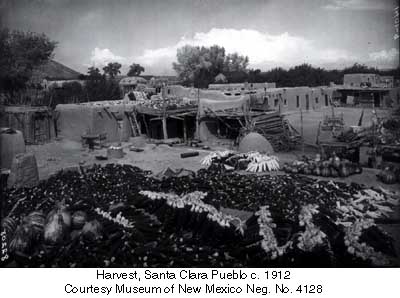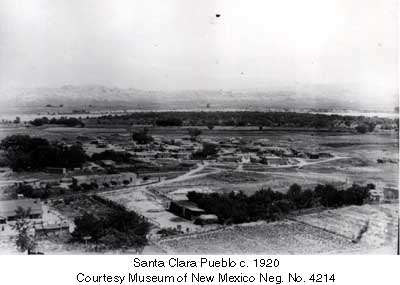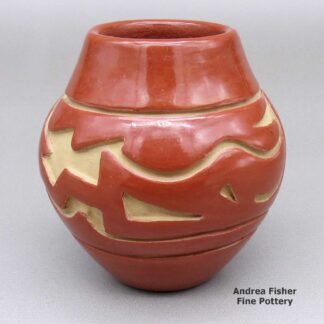| Dimensions | 7.75 × 7.75 × 7 in |
|---|---|
| Condition of Piece | Very good, adhesive residue on bottom |
| Date Born | 1975 |
| Signature | Deer Path Badger Youngblood, with deer print hallmarks |
Nathan Youngblood, dpsc2d072, Bowl with geometric design
$5,600.00
A black bowl carved with a stylized avanyu design, includes a Third Prize ribbon from the 1975 Inter-Tribal Indian Ceremonial in Gallup, NM
In stock
Brand
Youngblood, Nathan
It was at Santa Clara that Nathan learned how to make pottery by watching his grandmother, Margaret Tafoya, and his mother working. Margaret and Mela showed Nathan how to make and polish the pots while his grandfather, Alcario, showed him traditional Santa Clara designs and how to carve them.
He produced his first two pieces (a tiny bowl and a clay peace pipe) in 1970 and entered them in the Juvenile Division of the Gallup InterTribal Ceremonial pottery competition that year. The tiny bowl earned a Second Place ribbon, the peace pipe earned a First Place ribbon.
Nathan dedicated himself full time to making pottery in 1976 and didn't just apprentice himself to his grandparents, he moved in for several years and immersed himself in their lifestyle. It was an intense apprenticeship as they taught him every aspect of the traditional pottery-making path: preparing, making, carving and firing.
One thing Margaret emphasized again and again and again: "The Clay Mother has a mind of her own, and she's going to do what she wants to do." Nathan said he didn't really get that until one day when he was working on a large, tall jar with a thick neck. He carved a design on the surface and burnished it. When he looked again he saw a small crack had appeared in the lip. He sanded off the crack and burnished it again. When he looked, the crack had reappeared. So he sanded and burnished and looked again. After two more attempts he simply cut the neck off and burnished the remainder of the piece. In the end he said, "I guess it just wanted to be a bowl. That is one of the first lessons I learned from my grandmother." Since then he's found it doesn't matter what his plan for the clay is today, it will do what it wants anyway.
In those early years of his career, Nathan was focused on making larger vessels, highly polished, deeply carved and physically heavy. He was also focused on creating the classic Santa Clara shapes and designs he'd been taught.
By the mid-1980s he moved into creating more complex historic and prehistoric Santa Clara shapes and designs. Those more complex shapes forced a rethinking of the designs he used and he moved into carving less linear flows that incorporated more of the whole surface of a vessel.
In the early 1990s he began incorporating some of the elements he loved in Asian ceramics into his pieces and that opened the door yet further to a mix of traditional and contemporary on the same piece.
Nathan also dreamed of making a Pueblo form of "Fabergé egg" and experimented long and hard to create that. Incorporating three separate pieces and involving three firings, that created a tremendous amount of risk in the project.
He successfully produced the first one in 1998 and said, "It is something I have dreamed of being able to make for 15 years, but until now was technically unable to create this piece. It may not speak to the traditionalist, but it had to be made."
His grandmother passed on in 2001 and in her honor he began to re-create many of her classic shapes, carving them with some of his own more contemporary designs. He also designed a line of jewelry and glass in those years, projects that allowed him to focus on how his imagery translated to other media.
Now Nathan generally makes bowls, jars, vases, canteens and plates in red, black and/or tan. He both carves and paints, often on the same piece. His patterns have become increasingly complex, intricate and delicate over time. While many of his pieces have a contemporary look and feel, he always creates everything in the traditional way.
Nathan is known for his creative designs and the outstanding quality of his work. Often earning both First and Second Place ribbons, Nathan has earned more than 140 awards for his pottery, including 40 awards at the Santa Fe Indian Market.
Nathan's work has been exhibited in galleries from Scottsdale to New York City. His work has also been shown at the White House, the National Museum of American Art in Washington, DC, the Gilcrease Museum of Art in Tulsa, OK, the Museum of Natural History in Denver, CO and the Heard Museum in Phoenix, AZ.
Over the years Nathan also served on the boards of the Southwestern Association of Indian Art, the Gallup InterTribal Ceremonial and the Wheelwright Museum of the American Indian.
Nancy Youngblood is Nathan's older sister.
A Short History of Santa Clara Pueblo

Santa Clara Pueblo straddles the Rio Grande about 25 miles north of Santa Fe. Of all the pueblos, Santa Clara has the largest number of potters.
The ancestral roots of the Santa Clara people have been traced to ancient pueblos in the Mesa Verde region in southwestern Colorado. When the weather in that area began to get dry between about 1100 and 1300 CE, some of the people migrated to the Chama River Valley and constructed Poshuouinge (about 3 miles south of what is now Abiquiu on the edge of the mesa above the Chama River). Eventually reaching two and three stories high with up to 700 rooms on the ground floor, Poshuouinge was inhabited from about 1375 CE to about 1475 CE.
Drought then again forced the people to move. One group of the people went to the area of Puyé (along Santa Clara Canyon, cut into the eastern slopes of the Pajarito Plateau of the Jemez Mountains). Another group went south of there to what we now call Tsankawi. A third group went a bit to the north, following the Rio Chama down to where it met the Rio Grande and founded Ohkay Owingeh on the northwest side of that confluence.
Beginning around 1580, another drought forced the residents of the Puyé area to relocate closer to the Rio Grande. There, near the point where Santa Clara Creek merged into the Rio Grande, they founded what we now know as Santa Clara Pueblo. Ohkay Owingeh was to the north on the other side of the Rio Chama. That same dry spell forced the people down the hill from Tsankawi to the Rio Grande where they founded San Ildefonso Pueblo to the south of Santa Clara, on the other side of Black Mesa.
In 1598 Spanish colonists from nearby Yunqué (the seat of Spanish government near the renamed "San Juan de los Caballeros" Pueblo) brought the first missionaries to Santa Clara. That led to the first mission church being built around 1622. However, the Santa Clarans chafed under the weight of Spanish rule like the other pueblos did and were in the forefront of the Pueblo Revolt of 1680. One pueblo resident, a mixed black and Tewa man named Domingo Naranjo, was one of the rebellion's ringleaders.
When Don Diego de Vargas came back to the area in 1694, he found most of the Santa Clarans were set up on top of nearby Black Mesa (with the people of San Ildefonso, Pojoaque, Tesuque and Nambé). An extended siege didn't subdue them but eventually, the two sides negotiated a treaty and the people returned to their pueblos. However, successive invasions and occupations by northern Europeans took their toll on the pueblos over the next 250 years. The Spanish flu pandemic in 1918 almost wiped them out.
Today, Santa Clara Pueblo is home to as many as 2,600 people and they comprise probably the largest per capita number of artists of any North American tribe (estimates of the number of potters run as high as 1-in-4 residents).
For more info:Pueblos of the Rio Grande, Daniel Gibson, ISBN-13:978-1-887896-26-9, Rio Nuevo Publishers, 2001
Upper photo courtesy of Einar Kvaran, Creative Commons Attribution-Share Alike 3.0 Unported License
About Bowls
The bowl is a basic utilitarian shape, a round container more wide than deep with a rim that is easy to pour or sip from without spilling the contents. A jar, on the other hand, tends to be more tall and less wide with a smaller opening. That makes the jar better for cooking or storage than for eating from. Among the Ancestral Puebloans both shapes were among their most common forms of pottery.
Most folks ate their meals as a broth with beans, squash, corn, whatever else might be in season and whatever meat was available. The whole village (or maybe just the family) might cook in common in a large ceramic jar, then serve the people in their individual bowls.
Bowls were such a central part of life back then that the people of the Classic Mimbres society even buried their dead with their individual bowls placed over their faces, with a "kill hole" in the bottom to let the spirit escape. Those bowls were almost always decorated on the interior (mostly black-on-white, color came into use a couple generations before the collapse of their society and abandonment of the area). They were seldom decorated on the exterior.
It has been conjectured that when the great migrations of the 11th, 12th, 13th and 14th centuries were happening, old societal structures had to change and communal feasting grew as a means to meet, greet, mingle with and merge newly arrived immigrants into an already established village. That process called for larger cooking vessels, larger serving vessels and larger eating bowls. It also brought about a convergence of techniques, styles, decorations and design palettes as the people in each locality adapted. Or didn't: the people in the Gallina Highlands were notorious for their refusal to adapt and modernize for several hundred years. They even enforced a No Man's Land between their territory and that of the Great Houses of Chaco Canyon, killing any and all foreign intruders. Eventually, they seem to have merged with the Towa as those people migrated from the Four Corners area to the southern Jemez Mountains.
Traditional bowls lost that societal importance when mass-produced cookware and dishware appeared. But, like most other Native American pottery in the last 150 years, market forces caused them to morph into artwork.
Bowls also have other uses. The Zias and the Santo Domingos are known for their large dough bowls, serving bowls, hair-washing bowls and smaller chili bowls. Historically, these utilitarian bowls have been decorated on their exteriors. More recently, they've been getting decorated on the interior, too.
The bowl has also morphed into other forms, like Marilyn Ray's Friendship Bowls with children, puppies, birds, lizards and turtles playing on and in them. Or Betty Manygoats' bowls encrusted with appliqués of horned toads or Reynaldo Quezada's large, glossy black corrugated bowls with custom ceramic black stands.
When it comes to low-shouldered but wide circumference ceramic pieces (such as many Sikyátki-Revival and Hawikuh-Revival pieces are), are those jars or bowls? Conjecture is that the shape allows two hands to hold the piece securely by the solid body while tipping it up to sip or eat from the narrower opening. That narrower opening, though, is what makes it a jar. The decorations on it indicate that it is more likely a serving vessel than a cooking vessel.
This is where our hindsight gets fuzzy. In the days of Sikyátki, those potters used lignite coal to fire their pieces. That coal made a hotter fire than wood or manure (which wasn't available until the Spanish brought it). That hotter fire required different formulations of temper-to-clay and mineral paints. Those pieces were perhaps more solid and liquid resistant than most modern Hopi pottery is: many Sikyátki pieces survived intact after being slowly buried in the sand and exposed to the desert elements for hundreds of years. Many others were broken but were relatively easy to reassemble as their constituent pieces were found all in one spot and they survived the elements. Today's pottery, made the traditional way, wouldn't survive like that. But that ancient pottery might have been solid enough to be used for cooking purposes, back in the day.
About the Avanyu
The avanyu is a mythical water creature likened to the feathered and plumed serpents of Mesoamerica. The design is primarily part of the design palette of Tewa potters from the Tewa Basin, and even there it varies by pueblo and artist. Wherever the artist is, the avanyu design generally represents the spirit of water rushing through a village after a downpour. The avanyu is also seen as the Keeper of Springs and Guardian of Water. The image is a prayer for rain with the realization of what a downpour can do when it falls on the hard soil of the arid and semi-arid Southwestern deserts.
Artists from San Ildefonso Pueblo generally use an avanyu design with a three-plumed head while Santa Clara Pueblo potters generally use an avanyu with three feathers hanging off the head. The avanyu always has a forked tongue, signifying the lightning bolts that herald its arrival. Some have simplified the design to one feather or plume while others have stylized the design and almost made it cubic or Oriental in design and layout.
Hopi-Tewa potters generally use a somewhat similar Hopi version of a flying, feathered serpent named kwataka. The Zuni version is Kolowisi, although it has been determined that the power of Kolowisi is too much for anyone who is not of Zuni descent so depictions of it have gotten almost as rare as depictions of kwataka.
Margaret Tafoya Family Tree - Santa Clara Pueblo
Disclaimer: This "family tree" is a best effort on our part to determine who the potters are in this family and arrange them in a generational order. The general information available is questionable so we have tried to show each of these diagrams to living members of each family to get their input and approval, too. This diagram is subject to change should we get better info.
- Margaret Tafoya (1904-2001) & Alcario Tafoya (d. 1995)
- Mary Ester Archuleta (1942-2010)
- Barry Archuleta
- Bryon Archuleta
- Sheila Archuleta
- Jennie Trammel (1929-2010)
- Karen Trammel Beloris
- Virginia Ebelacker (1925-2001)
- James Ebelacker (1959-) & Cynthia Ebelacker
- Jamelyn Ebelacker
- Sarena Ebelacker
- Richard Ebelacker (1946-2010) & Yvonne Ortiz
- Jason Ebelacker
- Jerome Ebelacker & Dyan Esquibel
- Andrew Ebelacker
- Nicholas Ebelacker
- James Ebelacker (1959-) & Cynthia Ebelacker
- Lee Tafoya (1926-1996) & Betty Tafoya (Anglo) (1933-1988)
- Linda Tafoya (Oyenque)(Sanchez)(1962- )
- Antonio Jose Oyenque
- Jeremy Rio Oyenque
- Maria Theresa Oyenque
- Melvin Ray Tafoya (1957- )
- Phyllis Bustos Tafoya
- Linda Tafoya (Oyenque)(Sanchez)(1962- )
- Mela Youngblood (1931-1990) & Walt Youngblood
- Nancy Youngblood (1955- )
- Nathan Youngblood (1954- )
- Toni Roller (1935-) & Ted Roller
- Brandon Roller
- Cliff Roller (1961- )
- Deborah Morning Star Roller
- Jeff Roller (1963- )
- Jordan Roller (1987- )
- Ryan Roller
- Susan Roller Whittington (1955- )
- Charles Lewis (1972- )
- Tim Roller (1959- )
- William Roller
- LuAnn Tafoya (1938- ) & Sostence Tapia
- Michele Tapia Browning (1960- )
- Ashley Browning
- Mindy Browning
- Daryl Duane Whitegeese (1964- ) & Rosemary Hardy
- Samantha Whitegeese
- Tina Whitegeese
- Michele Tapia Browning (1960- )
- Shirley Cactus Blossom Tafoya (1947-)









